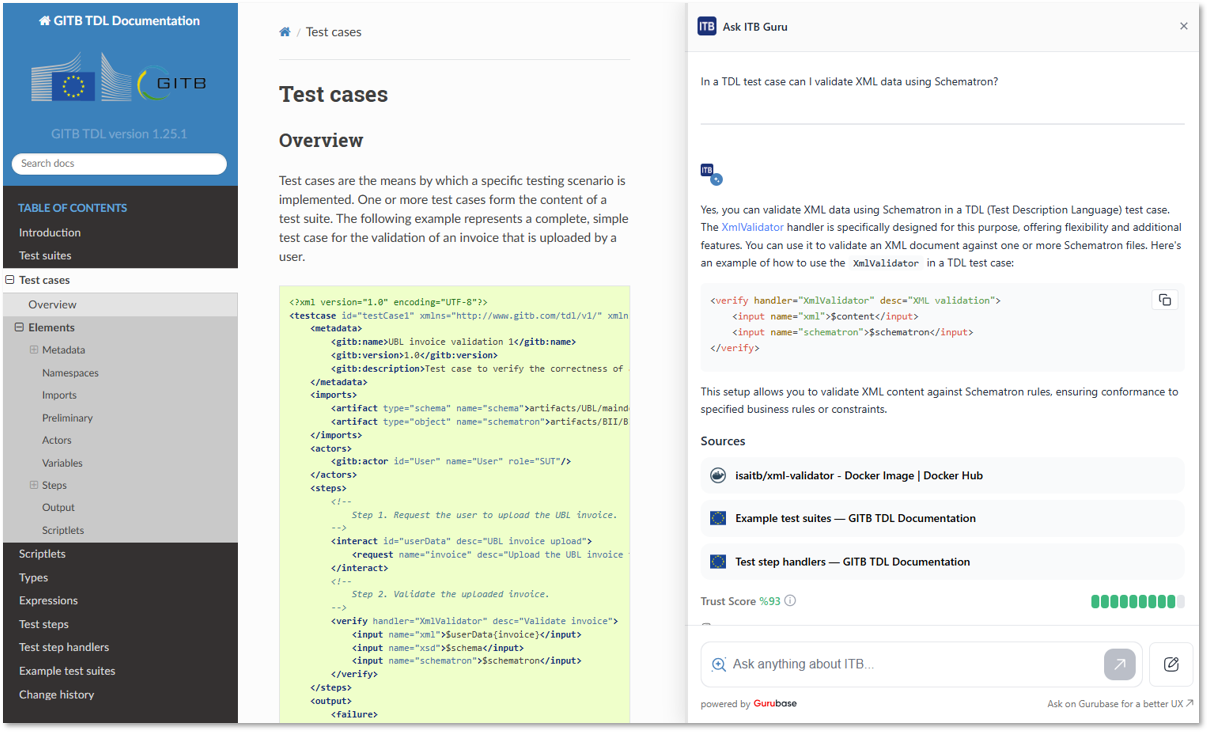Organisation user guide
Organisation users are responsible for executing tests and reporting on behalf of their organisation, using a simplified and largely read-only interface.
Organisation admin guide
Organisation administrators are responsible for defining what an organisation will test for, its configuration, and managing its users.
Community admin guide
Community administrators are responsible for the overall conformance testing setup of a community, monitoring testing progress, and management of its users.
Test Bed guides
Focused documentation on specific topics and step-by-step tutorials. Popular guides include the Test Bed value proposition, the "getting started" guides for project managers and developers, the Test Bed installation guide (development and production), and the validator guides (for XML, RDF, JSON and CSV).
GITB TDL documentation
Reference documentation for the GITB Test Description Language (TDL), the XML-based language used to define test suites and test cases. The documentation includes also numerous samples and best practices.
AI assistant
All documentation listed above features an AI assistant, trained on the Test Bed's documentation, as a good first point to ask questions. Access the assistant from any documentation page by clicking the Ask AI button in the bottom-right corner to open the question panel. Alternatively you can use directly Gurubase.io, the underlying service used to power the assistant. Each answer provided is complemented by the documentation sources used, a trust estimation towards the answer's correctness, and interesting follow-up questions.

Inline AI assistant

AI assistant on Gurubase.io
Online courses
In collaboration with the Interoperable Europe Academy the Test Bed team has made available two online courses to introduce it to newcomers.
Getting started with the Interoperability Test Bed
Course to introduce managers to the concept of conformance testing, and the Test Bed's key services, use cases and way of working.
Additional resources
The following resources are available to you to complement the online documentation.
- The latest Interoperability Test Bed source code (including all releases).
- The original GITB proof-of-concept implementation source code on which the Interoperability Test Bed is based upon.
- The source code for the Test Bed's validators (RDF, XML, JSON and CSV).
- The GITB TDL Controlled Vocabulary (SKOS) identifying the capabilities linked to creating and interpreting GITB TDL test cases.










